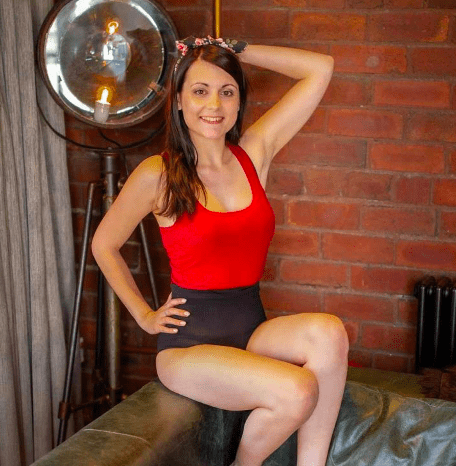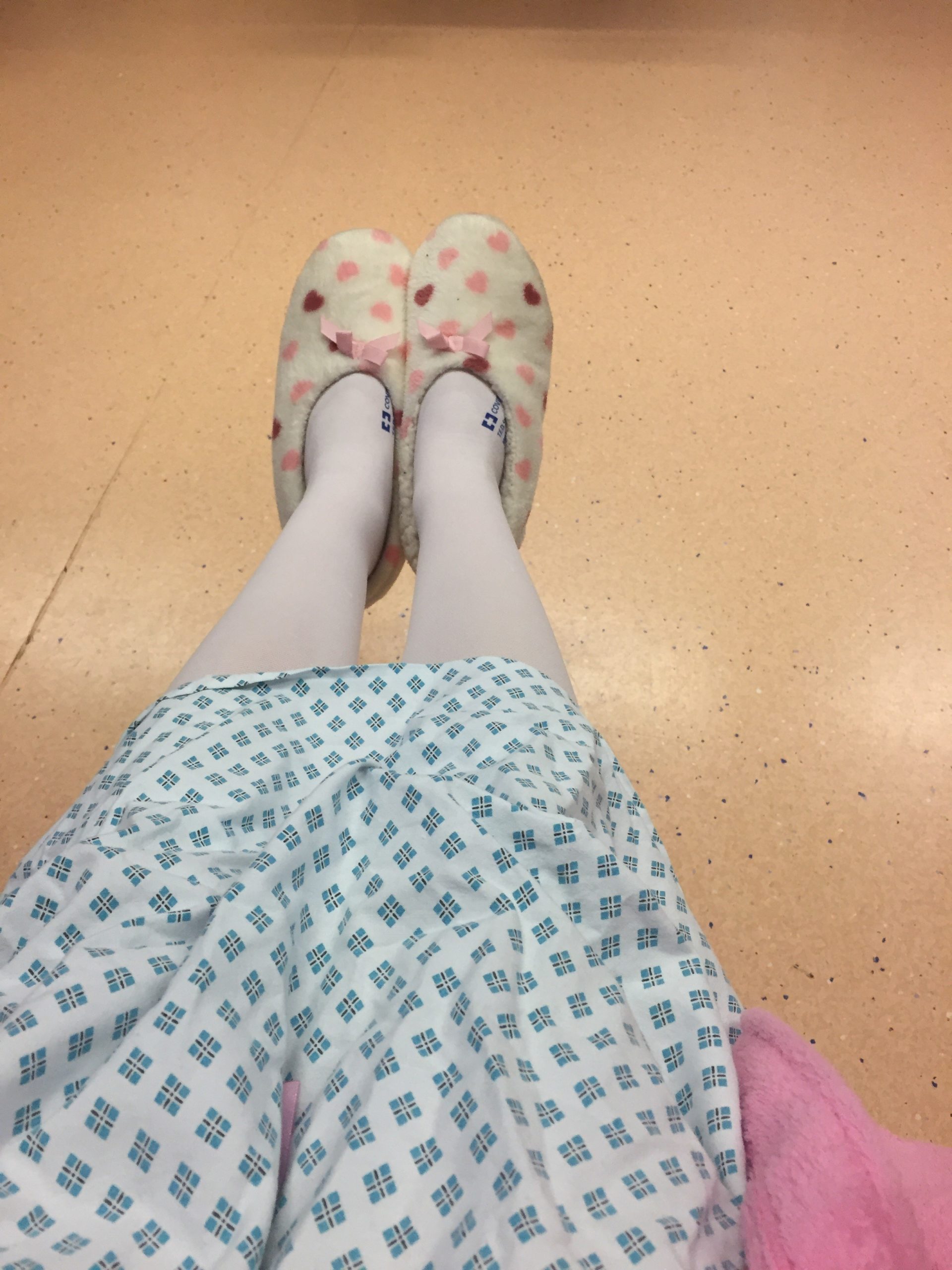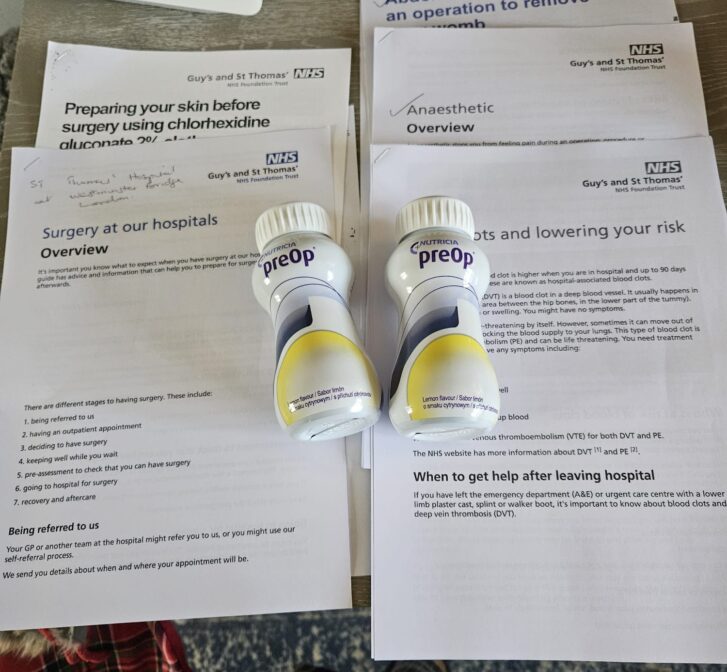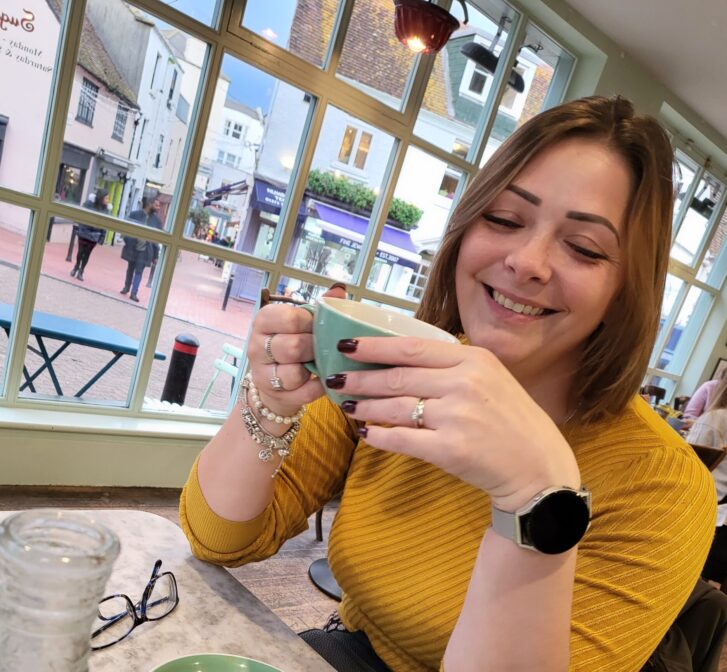What Is Stoma Dilation?
Happy April my lovely Pelican readers! I hope April has started off as a good month for you & that you feel like a bit of hope is on the horizon in these continually crazy times.
If you haven’t heard of stoma dilation, join the club I was in before I had to “welcome” it into my life with not-so-open arms!
A little bit of background on me
If you’ve followed me for a while now, you’ll probably know that I’ve had my stoma for nearly 10 years now. I had my operation back in 2011 when I was 19 & Stacey Stoma is permanent.
As months went on after surgery, I developed keloid scarring on the top of my stomach scar. Keloid scarring is a term used when scar tissue becomes too thick because of an overload of collagen to a certain area of skin. The body in effect goes into overdrive, as far as I understand, and works overtime to heal an area to the point where it over heals. Therefore, the scar covers more than the original wound. The top of my stomach scar was like this for a year or two after my surgery and felt quite tight when I stretched. Through massaging the scar with moisturiser over time and remaining active, it finally thinned out like the rest of my scar.
I was told by my surgeon after using Bio Oil for a time that it was in fact the massaging motion that helps break down the scar and not the oil itself, so stuck to an E45 moisturiser as it was miles cheaper!

You can see bottom left where the internal stitches had been sewn tighter in my stomach and on the right how the thick top bit of my scar got thinner over time.
Keloid scarring to adhesions behind my stoma
Behind my stoma, I have a narrowing and adhesions. Adhesions are internal scar tissue and usually happen as a result of surgery. I also have scar tissue in my pelvis and the left side of my ovaries are matted due to this. This can definitely be a story for another day as it’s a bit of a long one, but adhesions are very common after abdominal surgery, especially major surgeries where a lot of “digging” has to be done, for want of a better term!
An MRI a couple of years ago (in 2019) showed a narrowing at skin level behind where my stoma sticks out my stomach. I have had a very small stoma anyway since my operation in 2011, ranging from 23mm-30mm at its biggest. In the last couple of years, it has shrunk to 20mm, but this is also down to me losing weight as there tends to be a correlation between stoma size and our weight. Stoma size can also be affected by diet, temperature changes, swelling from surgery and how hydrated we are, to name just a few things. Sometimes my stoma protrudes from my stomach quite a lot, whereas other times it retracts (goes flat or starts to sink back into my stomach). Again, there are a number of factors that can cause either.
My stoma can retract because of where the adhesions are, especially when food is trying to pass. I now wear a convex bag which helps this, but in order to help my narrow stoma and adhesions, I am now back to dilating my stoma as I did consistently in 2019.
What does it mean to “dilate”?
You may have heard of this term before, most likely from labour talk when a woman has begun labour to describe how far along into the birth she is. To put it simply, it means to enlarge, stretch or expand and originates from the same meaning of the Latin word ‘dilatare’.
Stoma dilation in hospital
Since getting on board with stoma dilation in 2019, there have been a number of ways in which this has been done. To start with, ranging from once a week to every month, I went up to hospital where my surgeon and stoma nurse saw me on the bowel ward (as a day patient) to pass a urinary catheter (thin tube that is usually inserted into the bladder to collect urine) into my stomach, past the skin level stoma narrowing. When I have this done, a syringe is attached on the external end of the catheter, filled with water. Different volumes of water are then fed into the catheter (smallest volume first) to make it the catheter balloon in my intestine. This is how a catheter usually stays inside the bladder as the balloon sits in place to stop the tube from simply slipping out.
My surgeon then pulls the balloon back up out of the stoma (still as inflated as possible but not to burst anything – ouch!), to encourage the narrow circle of skin around my stoma to gradually open up. The balloon size is then gradually increased, and it gets assessed as to what extent my stoma can pass it back out when my surgeon pulls on the catheter before it gets painful or risky. The surgeon also uses various sizes of medical dilators which are metal instruments and also puts his finger into my stoma (covered with a medical glove) to assess it closer.
This is how I do the dilation process at home as using a finger to dilate it allows you to assess how the stoma reacts more and also to feel for any abnormalities. It is also easier to control & lubricating jelly is used in the dilation process to make it easier & safer so that perforations etc are less likely.
Does dilation hurt?
In hospital, the procedure is done without anaesthetic or sedation but I do have paracetamol and codeine a good while before I go in. Now that I’m more used to doing the dilation at home (lucky me), I don’t always need pain relief unless I’m having a “bad stomach/stoma” day, and also I’m usually more gentle with myself than my surgeon!
I find that sitting between a laying position and upright, propped up by pillows, or standing helps when I’m dilating my stoma as my stomach doesn’t tense as much as when I’m sat unaided on the side of the bath for example or in a chair.
I wouldn’t say it is painful as such but I do have quite a high pain threshold so that might differ for someone else. It feels more uncomfortable and stings a little at times, but more than anything I can feel the pressure inside my stomach and in my stoma. Sometimes, the skin around my stoma definitely feels like it is being stretched as far as it can go and it can make me cringe a little! At this point, I usually don’t push it too much further (pun intended) before I stop the process. When it gets to the higher volumes with the balloon and the thicker the medical instrument in hospital, it does start to hurt quite a lot, to the extent it can take my breath away. Sometimes the paracetamol and codeine seem to help, whereas sometimes it doesn’t… just one of those things!
How often do you dilate?
Since 2019, I have gone through months of dilating my stoma most days (usually 5 days out of 7, it gets tedious & unpleasant & I need a break for my sanity some days) then other months I have managed to avoid it. Some months, I have to do it once or twice a week (which I usually try to make myself to anyway even when things are easier, to stop the skin closing around my stoma from the scar tissue). I know my body so well by this point so I usually just listen to my body and stay in touch with my stoma nurse and medical team before I change any part of my routine or the frequency. I also have check-ups with my stoma nurse every few months or if I’m having problems or difficulty doing it.
With needing to dilate every day and wearing a one-piece stoma bag, I change my bag once or twice daily. This seems excessive but this is what has always worked for me and what fits into my routine. I don’t get on well with two-piece bags (where the base place is separate to the bag) and I have good stoma products for my skin to ensure it doesn’t get sore. I also find I can wear the clothes I love more by changing my bag each day & I’ve found a bag that I’ve used for the last 2 years that I’m very happy with. The dilation process itself and changing my bag probably takes 5-10 minutes all in all out of my day. I usually do a bag change when I am not dilating in under 3 minutes as it’s a well-rehearsed part of my routine, just like brushing my teeth or doing my make-up.
Is dilation a solution to the problem?
Dilation isn’t an ideal or long-term solution. The thing that worries me the most, besides the mental challenge of it at times, is that scar tissue will build if I’m constantly disturbing my stoma and things are going down it rather than coming out!
When it was first explained to me, I remember looking at my consultant and stoma nurse in horror as I had been told to never put anything down the stoma. However, this is medical advice and I’ve been shown how to do it properly for my own situation. Please don’t try putting anything down your stoma unless you have sought medical advice first – it definitely isn’t worth the risk & it’s a shock to the system! It feels very unnatural, even when I’m more into the dilation routine and it’s more a part of my daily life.
I feel dilation is something I will keep trying until I can’t take anymore or it becomes very difficult as there is a chance it may work long term and if that is the case then I may not need surgery to refashion my stoma or have a new one formed. Also, surgery causes more scar tissue, so there’s nothing to say it won’t happen again…it’s always fun & games & never straightforward, right?! The idea of the process in simple terms is to keep widening the restricted circle of skin around my stoma to stop it from closing in on itself as quickly and as viciously so that over time it slows down or stops narrowing completely. This will enable me to have a more varied & consistent diet with better portions long term, but I can also have liquid supplements if needs be. Hopefully, I will then have more energy, less pain & discomfort (a girl can dream, right?!) & less headspace invaded!
Have you ever heard of dilation or have had to do it yourself?
I’d love to hear your experiences via my Instagram or e-mail: [email protected]!
Until next time,
Amy & Stacey Stoma x
This blog post is intended to give advice to ostomates. The information given is based on Amy’s personal experience and should not be taken as clinical advice. Each ostomates needs are unique to them and their stoma care routine. Please consult with your Stoma Care Nurse before undertaking any changes to your stoma care routine or if you are experiencing any health issues.

Meet the blogger: Amy
Everybody, meet Amy! She is 29 years old & is a Yorkshire girl. Amy has had Crohn’s Disease symptoms as long as she can remember but was diagnosed at age 7










